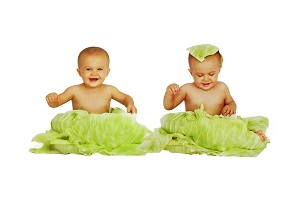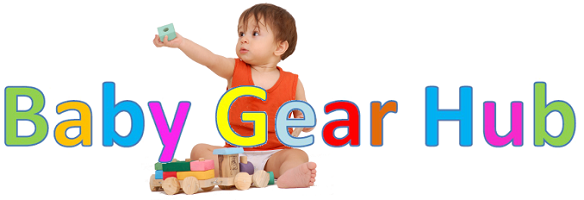
Photo by simmbarb
If you’re about to introduce a bottle to your breastfed baby you have quite a task ahead. It’s crucial that your baby not only accepts the bottle but also be willing to switch seamlessly between a breast and a bottle. Here’s how to make it smooth for both of you. It’s not always easy but the transition also does not have to be difficult.
There are several reasons why moms decide to introduce the bottle. The most popular ones are:
- going back to work;
- mom wants some more sleep at night;
- dad wants to have a chance to feed and bond with the baby;
- medical reasons (nipple soreness etc.).
It is important to understand that introduction of a bottle does not have to be the end of breastfeeding. Quite the contrary. In certain situations it can save breastfeeding. By protecting the milk supply and feeding your baby with a bottle you would have time to solve a temporary issue with breastfeeding if needed. This often happens to moms who want to go back to work but still want to breastfeed.
When to introduce a bottle?
It’s best to start introducing a bottle once the breastfeeding is well established. This usually takes place around week 4. You can start pumping milk a week earlier to get comfortable with operating of a pump and asses if you prefer to express simultaneously with breastfeeding (from your second breast) or do it after you feed your baby.
Babies between week 4 and 6 are thought to be at their best age to accept the bottle. Their technique should be developed by now and they should not have “an opinion” which often happen with older babies.
Mechanics of bottle feeding
Modern bottles often feature technologically advanced nipples that can efficiently mimic the mechanics of breastfeeding. In older designs babies didn’t have to work for the milk as it just continuously dripped from the nipple. This is why breastfed babies were much less likely to become obese then those who were fed with a bottle (1). If the milk flows effortlessly some babies would drink it not because they are hungry but because they like to suck and they have to do something with the milk that just appeared in their mouths.
In modern nipples babies can easily regulate the flow of milk with more or less vigorous sucking. They have to use similar tongue movements (peristaltic) and engage same groups of muscles as when sucking a breast.
Some modern bottles due to their construction can even replicate mother’s let-down reflex. Comotomo bottles for example are made of silicone and can be gently squeezed when the baby starts sucking enthusiastically at the beginning of the feed which releases the initial portion of milk.
Common problems and simple solutions
Some babies just start drinking from the bottle as if nothing has changed, others require more attention, sometimes much more. Pediatricians and experienced midwifes often advice not to give up and just test different approaches. See popular scenarios that may be helpful in your case.
- Baby won’t take the bottle when mom is available. This is a very common situation in which parents give the baby a choice between an unfamiliar artificial object and a well know breast that produces milk. The choice is obvious and shouldn’t be a surprise to anyone. In most cases if mom is not around the baby would be much more likely to accept a bottle.
- Baby would take the bottle only from the mother. This is quite the opposite to the above. As mentioned before introducing a bottle may require a lot of testing. In this situation the baby associates feeding with mother and do not understand that someone else can provide food. You may easily rectify this by holding the baby with another person (dad, caregiver) while bottle feeding and after some time letting the other person hold the baby once you are still there. The baby will eventually get accustomed to be fed by this person.
- Baby is scared of the bottle. This is not very common but some babies start crying when you try repeatedly substitute your breast with a foreign, unknown object. Try showing the bottle to the baby first and just hold it in your hand. This way they will get accustomed to the shape and smell and will not associated it with something hostile.
- Baby won’t take a bottle despite being very hungry. This is an often mistake of new parents who think that if the baby is sufficiently hungry she would drink from anything including a bottle. They can’t be more wrong. It’s not that the baby is stubborn by not accepting the bottle. She just does not know what to do with it. She is hungry and this is clearly not a breast which she associates with food. The last thing that she want to do now is to experiment and try new things. When the baby is starving she will be much less likely to do anything else than try to sooth her hunger by the only way she knows that works which is breastfeeding. Try offering a bottle before your baby is very hungry.
Best practices when switching between bottle and breastfeeding
- Use bottles and nipples that are suitable for breastfed babies. They are designed to mimic mother breast with regards to shape, mechanics and feel. They also feature a slow flow nipples and come with anti-colic mechanisms.
- Try warming up the nipple with hot water before offering it to a baby. Most newborns hate cold nipples.
- When introducing a bottle to an older baby who often opposes to even try a bottle you may want to attempt bottle feeding once she is half asleep.
- Promote a proper latch on and prevent your baby from developing a habit of latching on the tip of the nipple which is painful when breastfeeding. This can be easily accomplished by brushing your baby’s lips with a nipple and thus encouraging to opening her mouth fully. Then place the entire nipple into her mouth.
- When bottle feeding for the first time use only a small amount of milk. If things go not the way you anticipated at least you wouldn’t waste too much of your liquid gold.
- If the baby take the bottle but does not want to suck for too long it is OK at the beginning to alternate the bottle and the breast during the same feeding.
- Know when your baby is full. Do not force her to drink all the milk from the bottle. This may cause stress and your baby may associate bottle with unpleasant experience. Most babies give clear signals that they have enough. These signals are not always the same and vary from baby to baby but usually involve: pushing bottle away, turning her head sideways or gasping.
References:
1 – http://www.ncbi.nlm.nih.gov/pubmed/23554385
